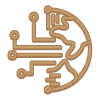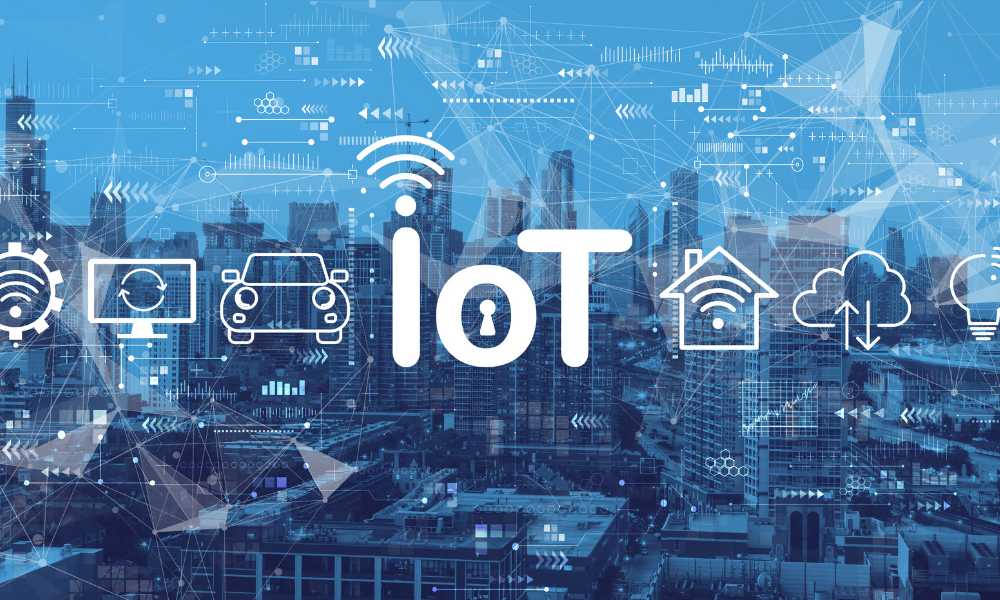Suppose you’re interested in the adoption of enterprise IoT solutions. You probably already know how quickly this practice is spreading throughout the world. Every second in 2021, 127 devices will link for the first time to the Internet. By 2022, the value of intelligent factories in North America alone will be more than $500 billion.
Given that the implementation of the IoT offers previously unachievable levels of worker safety and new business models, as well as new revenue sources, this development is scarcely surprising. You may learn more about business operations, employee and consumer behavior, and data that will help detect equipment issues and minimize equipment downtime using IoT devices. Sounds appealing? These advantages are attainable, but only if the company can effectively predict the dangers of implementing the IoT.
By the end of 2022, Ericsson predicts that about 30 billion IoT devices will be in use worldwide. The Internet of Things will eventually “invade” every corner of the globe. Undoubtedly, each corporation needs to decide whether or not implementing IoT will be a key component of its future business plan. However, it is imperative not to put off execution after deciding to wait for “better times.” Instead, companies must consider the hazards and carefully consider the Industrial IoT solutions they’ll use as quickly as possible.
Some hazards, including the potential for hardware malfunctions and financial costs, must be considered when evaluating an IoT ecosystem’s adoption. However, with a clear firm strategy, well-defined goals, and a thorough cost-benefit analysis of deploying Industrial IoT, almost all of these risks may be addressed. The conversion of a conventional factory into a smart factory is a costly undertaking. Still, your company will benefit considerably more if you can avoid common mistakes before implementation rather than having to fix them later. Here, we look at the dangers to watch out for when implementing the IoT ecosystem.
Unserved Business Expectations Following the Implementation of an Industrial IoT Solution
According to a Cisco survey, only 26% of firms believed their IoT initiatives were beneficial a few years ago. It means either their expectations were not met or the expenses associated with integrating new technologies needed to be revised. Additionally, it is common practice to underestimate the complexity of an IoT project, which causes delays in implementation at the POC stage. As a result, the business will suffer.
How to Reduce Additional Costs
Understanding that the transition to the IoT ecosystem is a complicated process that will affect enterprise design, personnel, and business models is critical. As a result, it is crucial to entrust skilled managers with developing a plan and putting the IoT into practice. Before the project begins, managers will help define the desired results for the IoT implementation. They will also help form a qualified team of engineers and optional specialists like data scientists, computer scientists, and statisticians.
Before introducing enterprise IoT solutions, unique business challenges must be recognized and addressed in IoT initiatives. We advise concentrating on the following when thinking about implementing IoT in a business:
Increasing manufacturing cycle speeds, enhancing equipment efficiency, raising product quality, and enhancing the overall security of the business
Determine priority areas, current challenges, and long-term goals. Make careful to provide the KPIs you want to accomplish. To ensure that your expectations match the actual results of putting the intended solution into practice, the company’s business objectives should be realistic and achievable.
People will still need to get used to new working conditions even though implementing the IoT ecosystem must limit human participation. As a result, the team must be trained to work within a new business and technical model, and any future business changes must be discussed. Roles must also be assigned to humans and machines.
Issues with Programming and Compatibility
Businesses frequently use Industrial Internet of Things solutions with a high proportion of machine manufacturing. Implementing the IoT ecosystem with modern equipment is often simpler for well-funded firms. However, for some, the expense of updating outdated production equipment may need to be lowered. Firms usually add sensors, intelligent devices, and gateways to adapt existing equipment.
However, the business must ensure that all devices can understand the protocols used to connect various data storage and address any compatibility issues before deploying IoT technology at a facility with outdated equipment. According to McKinsey, a company implementing the IoT must deal with compatibility difficulties for about 50% of all devices. The solution may not work as planned if compatibility problems are not successfully fixed.
The incorrect integration or methodology may lead to hardware issues, equipment damage, overheating, explosions, or system failure. These worries could result in work-related accidents, lawsuits, reputational problems, and manufacturing process disruptions in the worst-case situation. The IoT ecosystem and other linked devices are also impacted by incorrect programming or incompatibility concerns.
How to Address Issues With Device Compatibility
To lessen the risk of incompatible solutions and poor programming, creating a thorough IoT implementation strategy similar to what is done for business expectations would be advisable. Since every electromechanical device can be integrated into the IoT ecosystem, it is vital to decide whether it is more cost-effective to replace outdated equipment with newer technology or integrate it into the IoT system. Additionally, specifics should be taken into account when selecting an equipment solution. The following details must be included in your implementation plan:
Technologies and equipment currently in use
Examine the equipment’s state, the time it was purchased, its level of efficiency, operating costs, and the company’s current automation practices. This might help you identify the parts of the production process that want improvement.
Data Gathering
How does your company gather and manage data? How else would you like it to be? Analyze whether implementing the current solution or developing a new one would be more fruitful.
The Partner Partners
Pick the best vendors and development, partners. They might help you create software products that support a secure and functional IoT ecosystem in their setting.
Remember that hardware malfunctions may arise outside of the organization that deployed the corporate IoT solutions. To avoid experimenting with faulty solutions, you should pay greater attention to the quality of Industrial IoT solutions that can be deployed by outside partners. Businesses may receive assistance from qualified IoT managers in making the best decisions.
Real Problems
For the installation of the IoT ecosystem, additional tools, gadgets, controllers, transmitters, and computers might be needed. Consequently, you will have to manage additional equipment after IoT is implemented.
We advise hiring personnel with IoT device experience to prevent problems when servicing new devices. The current staff should also receive training on how to use the new machinery. This method will lessen difficulties in managing existing equipment and maintaining IoT devices.
Risks to Data Security
One of the main reasons organizations put off the move to an IoT environment, in addition to the expense, is the risk of data loss. More than setting up a VPN is required for IoT security. Theoretically, a hacker might bring down the entire corporation by gaining access to just one device on the IoT network. For instance, a disgruntled ex-employee can alter equipment or steal confidential data. Security must therefore be taken into account at every level of the Internet of Things, starting with the individual device and continuing via edge computing and the cloud. Make sure all Industrial IoT solutions comply with the toughest safety regulations to guarantee the entire system’s integrity. It is best to speak with IoT security experts for an evaluation.
Sadly, not all enterprise IoT solution developers provide access to safety standards. Consequently, it would help if you did a security risk assessment. When choosing a solution, consider the access points’ level of security.
Sensors and actuators that are locally hackable; data transfer and communication technologies; computer storage infrastructure; and software that analyses data on a computer.
What steps can you take to guard against unauthorized access to your devices? We advise creating secure data connections to secure remote access and cloud services to on-premises resources and encrypting the data. Using a local network can lessen the risks connected with the most sensitive data. Thanks to the internal network, the data cannot be accessed by anyone outside the company. As well as implementing authentication and access control measures, modern IoT devices and systems should be given distinctive identifiers and credentials. Additional physical security measures could be necessary to ensure that only authorized personnel can access IoT-enabled machines and programming tools.
The company should also give the IoT ecosystem a backup power source, such as an uninterruptible power supply, built-in batteries, or solar panels, to prevent data loss. Additionally, the devices and the entire production process will stop transmitting data in the event of a network failure.
Risk of Control Loss:
Using Industrial IoT Solutions, Can AI Replace Humans?
Without a doubt, the production process will become less under human control as AI becomes more widely used. It would help if you established the limits of human and artificial intelligence responsibilities by integrating AI-based industrial IoT solutions.
Enterprise IoT solutions are built on artificial intelligence, including deep learning, computer vision, machine learning, natural language processing, and big data analytics. It becomes more urgent to consider giving up control when AI is given more challenging judgments. Consequently, the question of which important managerial tasks may be given to AI without endangering the business’s decision-making process arises.
Human-machine interaction is more effective than machine-machine interaction in designing business strategies and creating enterprise architecture. This is because machines are perfect at handling entire data for normal activities. In contrast, humans can make responsible decisions in unusual and significant situations. Moreover, only people can offer answers built on solid theories when innovation is needed. As a result, you should calculate the following while examining the AI functional limits of your future IoT business:
• How much of your production process is automated?
• After implementing the IoT, what new manufacturing practices do you plan to implement?
• If the IoT system is capable of learning on its own
How likely is it that machines will ever replace people in this context? Shortly, this is unlikely to happen. Can a significant mistake cause someone to lose complete control of the production process? It is difficult to predict how this possibility will affect society. Therefore, it is necessary to balance machine-functioning approaches and human intelligence to sustain human management and boost corporate production.
Conclusions
Machines will undertake various duties, but they will only partially replace humans in production, at least not anytime soon. It doesn’t matter if you want to partially or fully smarten the production process or convert the entire facility to the IoT. In any case, you should strategically incorporate the IoT ecosystem:
• Examine the potential of the enterprise’s assets for IoT.
• Define business goals that can be met with IoT solutions.
• Use qualified workers while deploying projects
• Investigate the solutions and development partners before moving to the IoT ecosystem.
The IoT investment may take some time to pay off. Still, you professionally manage the IoT implementation process. In that case, you stand a high chance of realizing tremendous benefits the company could not enjoy before IoT adoption.


